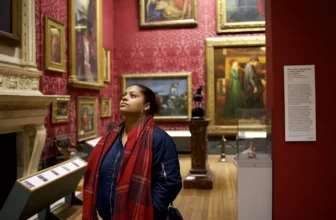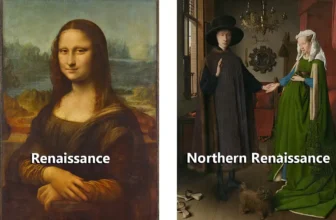A Deep Dive into Caravaggio’s “Bacchus” Painting
When we think of Bacchus, the Roman god of wine and ecstasy, what often comes to mind is wild abandon, frenzied indulgence, and lush revelry. Yet, when Michelangelo Merisi da Caravaggio painted Bacchus around 1596, he gave us something quite different. The painting doesn’t shout celebration, it seduces. It doesn’t preach joy, it questions. It doesn’t idealize the divine, it humanizes it.
This is not just a painting. It’s a layered performance frozen in oil, a masterclass in chiaroscuro, symbolism, and psychological tension. In this post, we’ll uncork the visual and thematic complexities of Caravaggio’s Bacchus, tracing its origin, its composition, its message, and its enduring relevance in art history.
Who Painted “Bacchus” and How Was It Created?
The artist behind Bacchus is Michelangelo Merisi da Caravaggio (1571–1610), an Italian Baroque master known for his radical naturalism and dramatic use of light and shadow. Caravaggio’s work marked a dramatic break from the idealized, harmonious figures of the High Renaissance. He painted what he saw, warts, dirt under fingernails, sensuality, and all.
Bacchus was painted around 1596, likely during Caravaggio’s early years in Rome. At this time, Caravaggio was under the patronage of Cardinal Francesco Maria del Monte, a sophisticated collector of art and music who played a critical role in Caravaggio’s career. The painting may have been intended for the Cardinal’s private collection and reflects the elite Roman taste for classical mythology, humanist ideals, and subtle eroticism.
Rather than using professional models or idealized figures, Caravaggio likely painted Bacchus using a young street boy or apprentice as his model, possibly even his own studio assistant. It was his signature style, real faces, real bodies, often working-class or marginalized individuals presented as gods or saints. Caravaggio painted from direct observation, without preparatory sketches, and his attention to the textures of flesh, glass, fruit, and fabric is both meticulous and immediate.
What Is “Bacchus” All About?
At first glance, Bacchus might seem straightforward. A young man reclines at a table. He wears a loose white toga slipping off his shoulder, crowned with grape leaves, holding out a glass of wine. On the table before him sits a still life of ripe fruit, apples, grapes, figs, a pomegranate, some of it starting to decay. The setting is modest, and the background is dark, typical of Caravaggio’s style.
But linger a moment longer, and the layers begin to reveal themselves.
This is not just Bacchus, god of wine. This is an invitation, but to what? A drink? A tryst? A spiritual descent into hedonism?
Caravaggio’s Bacchus is young, beautiful, and perhaps a little intoxicated. His cheeks are flushed. His lips slightly parted. His body is both sensual and slouched. He makes eye contact with the viewer, holding the wine with a slight unsteadiness, as if offering not just a drink, but himself. His left hand is holding a ribbon-tied carafe, partly submerged in water, hinting at an equilibrium between intoxication and purity, pleasure and control.
The painting is not a moral lesson, it’s a psychological study. The god appears more human than divine, more boy than immortal. Caravaggio collapses the mythological and the mundane into a single frame, asking us to contemplate the nature of pleasure, indulgence, and the fine line between ecstasy and ruin.
Symbolism and Deeper Meaning
What makes Bacchus so enduring is its allegorical richness. Almost every element in the composition carries symbolic weight.
1. The Glass of Wine
Wine is, of course, the drink of Bacchus, associated with transformation and liberation. Yet, the way Bacchus offers it, half full, in a fragile, delicately balanced glass, feels more like a test than a toast. Will you drink? And if you do, what happens next?
Wine in classical and Christian iconography can symbolize both spiritual transcendence and carnal temptation. Is the viewer being invited into a sacred rite, or a debauched encounter?
2. The Fruit
Caravaggio was a pioneer of the still life, and the fruit in Bacchus is no random assortment. The mix of fresh and rotting fruit, with bruises, wormholes, and browning skin, points to the transience of pleasure and youth. The bounty on the table is tempting, but it’s also decaying. This duality mirrors the figure of Bacchus himself, offering sweetness with an undercurrent of danger.
Some scholars interpret this as a memento mori, a reminder of mortality lurking beneath sensual delights.
3. The Water and Wine Carafe
On the far left of the table sits a carafe of wine, partly submerged in a water bowl. This may allude to the classical practice of diluting wine, a nod to moderation. Alternatively, it might symbolize dualities, light and dark, clarity and intoxication, spirit and flesh. The way the glass reflects the light, with Caravaggio’s signature realism, draws our eye again to fragility, both of the glass and of human will.
4. The Costume and Crown
The grape-leaf crown is a direct reference to Bacchus, but its slightly tattered state suggests this is not a god in his full glory. The toga slipping off his shoulder hints at vulnerability, maybe even exposure. Some have read homoerotic undertones into this portrayal, noting that Bacchus’ body language is more teasing than triumphant, more inviting than powerful.
The entire costume feels more like theater than divine regalia. Perhaps this is a mortal dressed as Bacchus, a boy playing a god, or a god lowering himself into human skin.
What Is Happening in “Bacchus”?
The genius of Bacchus lies in its stillness. Nothing is explicitly happening, and yet everything is happening beneath the surface. It is a moment caught in time, a suspended offering, a psychological exchange between figure and viewer.
Caravaggio doesn’t paint Bacchus in action, leading a drunken parade or performing a miracle. Instead, he gives us a quiet moment: a seated youth, poised on the edge of invitation. He looks out at us, making the viewer a part of the scene. The intimacy of the moment is unsettling, like we’ve intruded into a private, almost sacred space.
Is this Bacchus seducing us? Testing us? Warning us?
In many ways, the painting is a mirror. It reflects our own desires, doubts, and choices. Do we accept the wine? Do we step into the darkness he offers? Or do we recognize the rot beneath the beauty and decline?
What Type of Art Is “Bacchus”?
Bacchus belongs to the Baroque period, a style known for its emotional intensity, realism, and dramatic contrasts of light and dark (chiaroscuro). Yet even within the Baroque, Caravaggio was unique.
His work marks a shift from the idealism of the Renaissance to the gritty realism of modernity. He painted real people with real imperfections, often using natural light and stark shadows to emphasize mood and texture.
Bacchus is not a religious painting, though Caravaggio is famous for his Biblical scenes. It is a mythological portrait, but with a deeply psychological lens. It could also be considered allegorical or genre-bending, blurring the lines between portrait, still life, and narrative.
There is also a strong theatrical element. Bacchus is not engaged in divine activity, he is posing, almost like an actor. This theatricality is intensified by the self-consciousness of the gaze, the slightly artificial costume, and the suggestion that this may not be Bacchus at all, but someone playing him.
Where Is “Bacchus” Located Today?
Today, Caravaggio’s Bacchus resides in the Uffizi Gallery in Florence, Italy. It was donated to the gallery in the early 20th century and remains one of its most popular attractions.
Interestingly, when conservationists X-rayed the painting in 2009, they discovered something fascinating: a tiny reflection of Caravaggio himself, hidden in the carafe of wine on the left. This tiny self-portrait, barely visible to the naked eye, shows the artist at his easel, painting the very image we are viewing.
This revelation confirms what many art historians have long suspected, that Caravaggio painted Bacchus in a mirror, using himself and his studio as reference. It adds yet another meta-layer to the piece: the god is a boy; the boy is Caravaggio; and Caravaggio is inviting us into his world.
What Does “Bacchus” Painting Represent?
Caravaggio’s Bacchus is a masterpiece of ambiguity, sensuality, and symbolism. It challenges our assumptions about mythology, divinity, and the human experience. Unlike the heroic gods of Renaissance art, this Bacchus is earthy, tired, slightly intoxicated, and utterly real.
He represents more than wine. He represents the duality of pleasure and decay, the fleeting nature of youth, the intimate line between the sacred and the profane. His offering is not just a drink, it is a choice. A test of who we are and what we value.
In Bacchus, Caravaggio doesn’t moralize. He tempts. He invites. He dares us to step closer, to look deeper.
Even over 400 years later, this painting doesn’t just hang in a gallery, it speaks. And what it says depends entirely on who is listening.
Key Details Summary:
Title: Bacchus
Artist: Michelangelo Merisi da Caravaggio
Year: c. 1596
Medium: Oil on canvas
Dimensions: 95 cm × 85 cm (37 in × 33 in)
Current Location: Uffizi Gallery, Florence, Italy
Style: Baroque; naturalism; mythological allegory
Themes: Youth, indulgence, decay, mortality, sensuality, duality
Symbolism: Wine (pleasure/transcendence), rotting fruit (decay/death), water (purity), costume (identity), reflection (self-insertion)




